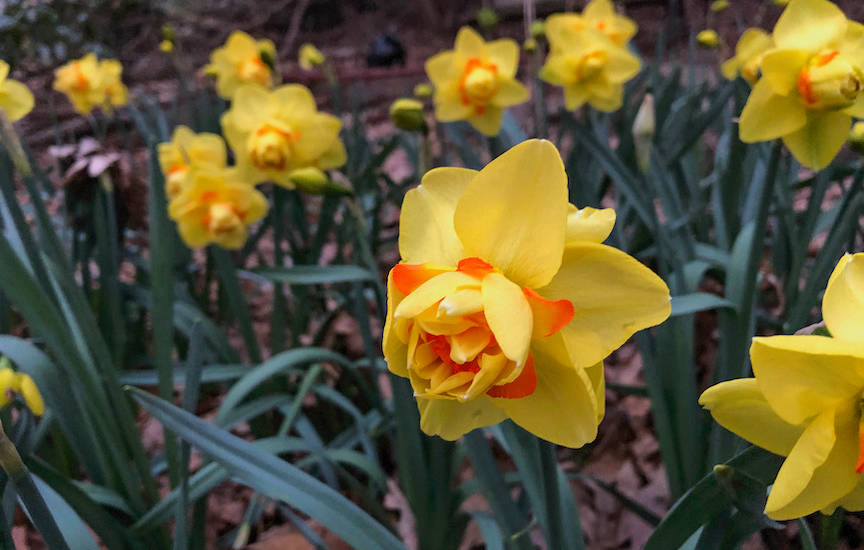
Gardening Green with Doug
Have you heard of ‘Sir Winston Churchill’ Daffodils?
PLANTING DAFFODILS NOW WILL MAKE FOR A COLORFUL SPRING!
By Doug Oster
October 11, 2022
Gardening obsessions are just one thing which drive us to plant what we love. Although my enjoyment of planting bulbs in general keeps me busy this time of the year, it’s daffodils which have truly captured my heart.
My affection for daffodils goes back to a visit to Lake View Cemetery, in Cleveland, where my grandparents are buried. While visiting the graves as a seven-year-old, I was introduced to Daffodil Hill as I glanced behind me. It was started in the 1940s, and has become quite a local attraction every spring. My mother always talked of Daffodil Hill and when I moved to my current garden in 1998, I told her I was creating my own version of the hill on my property in memory of my grandparents. That means adding hundreds of daffodils each season; the way to make that job easier is using a tool called a bulb auger. It’s a big drill bit, which attaches to a power drill. A powerful 20-volt rechargeable drill is perfect, but a long extension cord would work on a conventional drill. I use the Power Planter 3x7 inch auger for solo planting, and no one is paying me to say that. Working alone on my kneeler with a bag of bulbs on my left, the short auger drills the hole and then I drop a bulb in. A longer version of the auger works well with a two-person operation, one drilling, the other planting.
There are so many positives to growing daffodils, they don’t need much from the gardener once planted, deer, and other critters leave them alone and they are the perfect harbinger of spring. Once they arrive, there’s no turning back, the season starts in earnest. Daffodils, like all bulbs are planted three times as deep as the bulb itself and enjoy full sun along with well-drained soil that will dry out in the summer. They can be planted in problem areas like under the drip lines of trees or on hillsides.
I inherited some bulbs, which were planted in a narrow strip between the house and sidewalk under the eaves of the roof. Because of their proximity to the house, they always emerge too soon, but annually put on their spectacular show even after a freeze lays the pretty flowers prostrate on the sidewalk. That thin bed doesn’t get much rain over the season, which suits the bulbs perfectly.
There’s no need for fertilizer at planting time, but scattering some Bulbtone over the area each spring can’t hurt. Informal drifts are usually how daffodils are added to the landscape, they look great that way. A planting of 25, 50, 100 or even 500 bulbs will become an incredible spring statement.
To extend the blooms, choose early, mid, and late season varieties. In our zone 5/6 gardens, that means flowers from late March through May. Sometimes after decades, daffodils will produce more greens than flowers as they have become crowded below the soil. The best time to separate them is in the spring when it’s obvious the bulbs won’t bloom. Lift the clump and gently tease the bulbs apart. The bigger bulbs can be replanted, still attached to their foliage. Adding compost to the planting hole will help them become established. I discard the smaller bulbs, but if there was a space for them, they would eventually start blooming.
There are 13 different daffodil divisions, each one has a different type of flower, there’s nothing wrong with beautiful yellow trumpets, but there’s so much more.
It’s hard to pick favorites, but ‘Sir Winston Churchill’ is certainly a winner in my garden. If a breeder names a type of plant after someone like Churchill, it has to be something special. It’s a long and late bloomer with small, multi-stemmed double creamy white flowers with yellowish orange centers which have a gardenia like fragrance.
‘Tahiti’ is another double (division 4) which has large, luminescent golden yellow flowers with orangish centers. There are literally thousands of different types of daffodils to choose from.
Start locally at a good nursery or garden center, they might even have a big basket of bulbs to chose from. If that’s the case, take time to find the biggest bulbs. The top of the bulb is referred to as the nose, some daffodils will have more than one, each nose produces a flower, so find the big bulbs with two or three noses.
When we get to mid-November, most nurseries will start to discount bulbs. They can be planted until the ground freezes solid and will be cheaper and cheaper as winter closes in.
If you can’t find what you want locally, I’ve included a list of my favorite online choices. Planting daffodils now will mean an amazing colorful display this spring and for many more seasons to come.
In this previous story for The Green Voice, Doug introduces gardeners to other unique and easy to grow bulbs.
Sources:
Brent and Becky’s Bulbs is a great source for bulbs. Brent Heath is a third generation bulbsman and has taught me much of what I know about bulbs. The quality and prices are great.
www.brentandbeckysbulbs.com, 877-661-2852.
Van Engelen Wholesale Flower Bulbs offers bulk quantities of bulbs at a reduced price. www.vanengelen.com, 860-567-8734.
Old House Gardens sells wonderful heirloom cultivars which have stood the test of time. www.oldhousegardens.com, 734-995-1486.
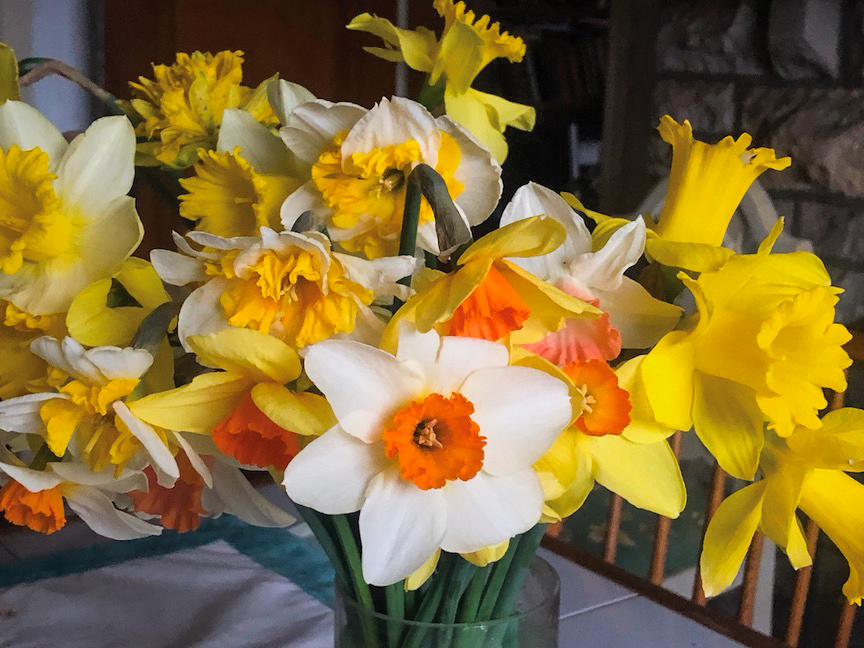
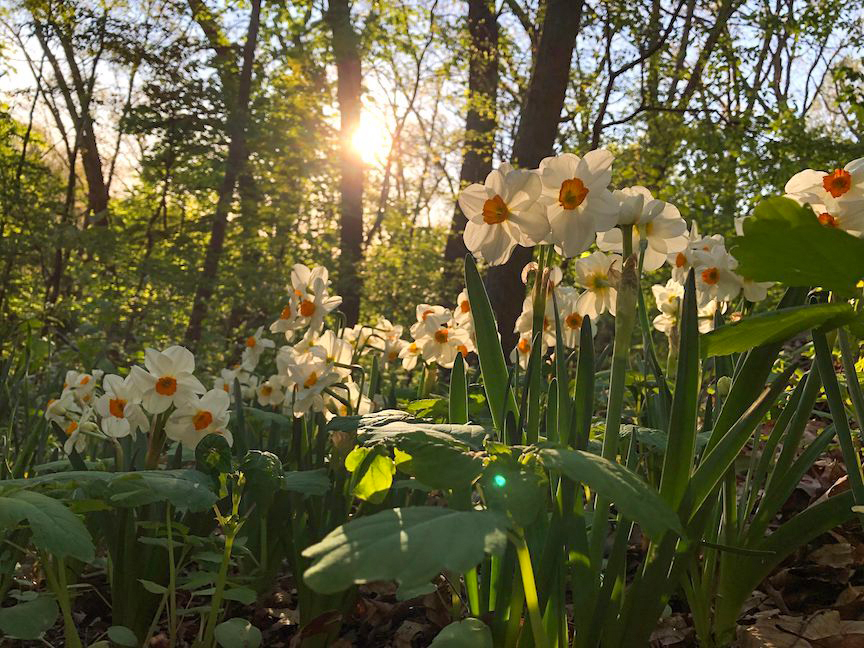
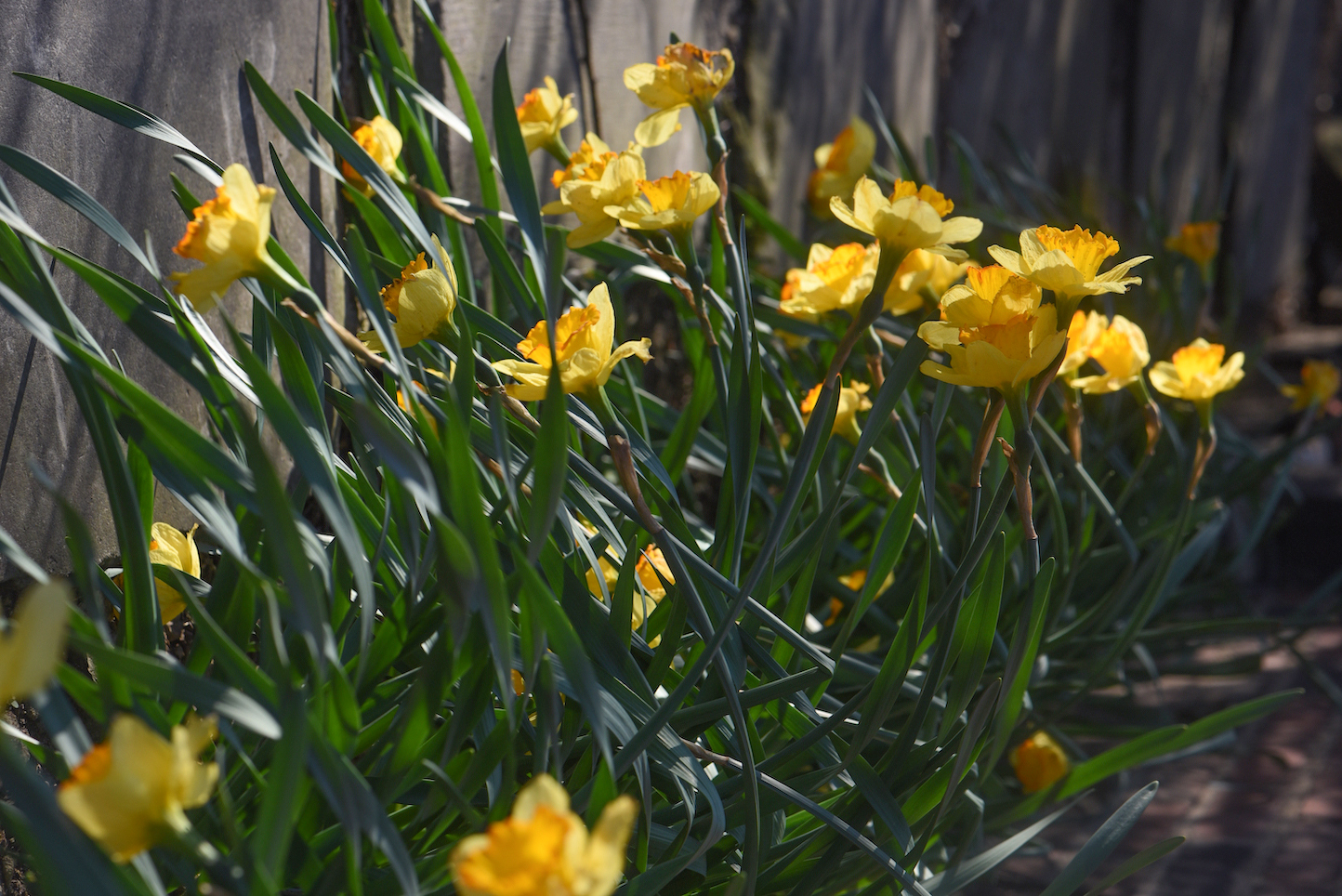
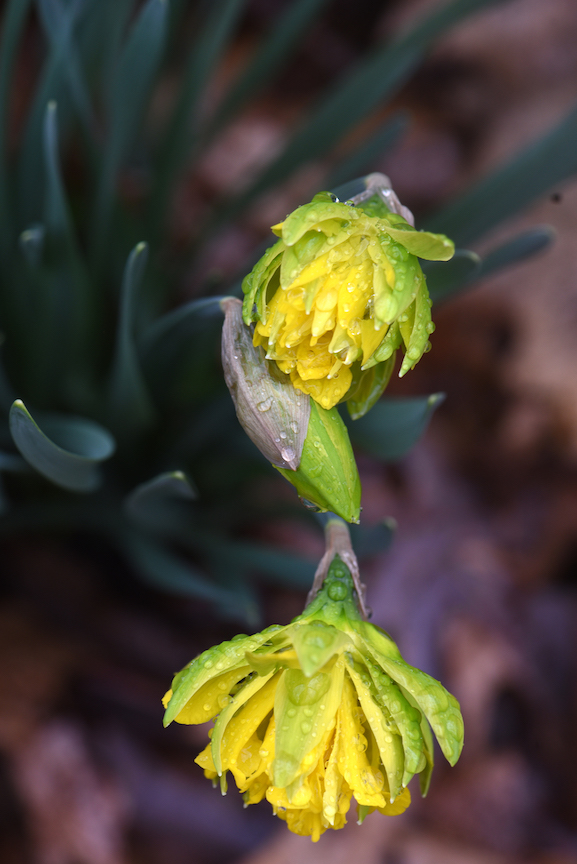
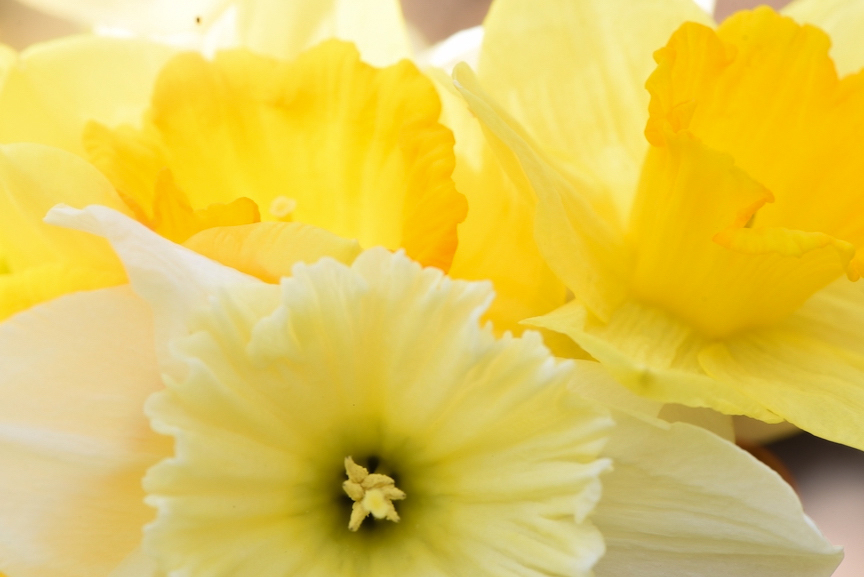
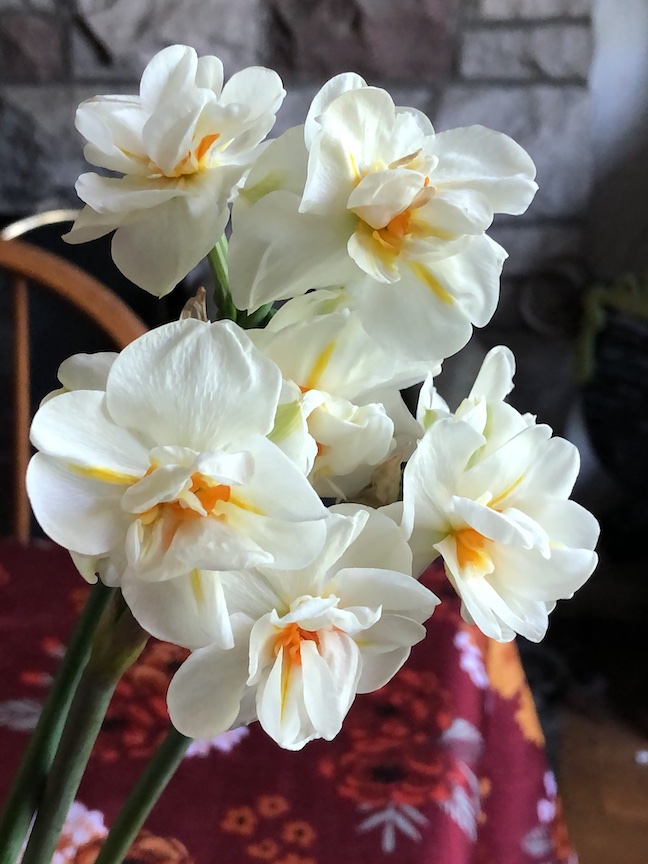
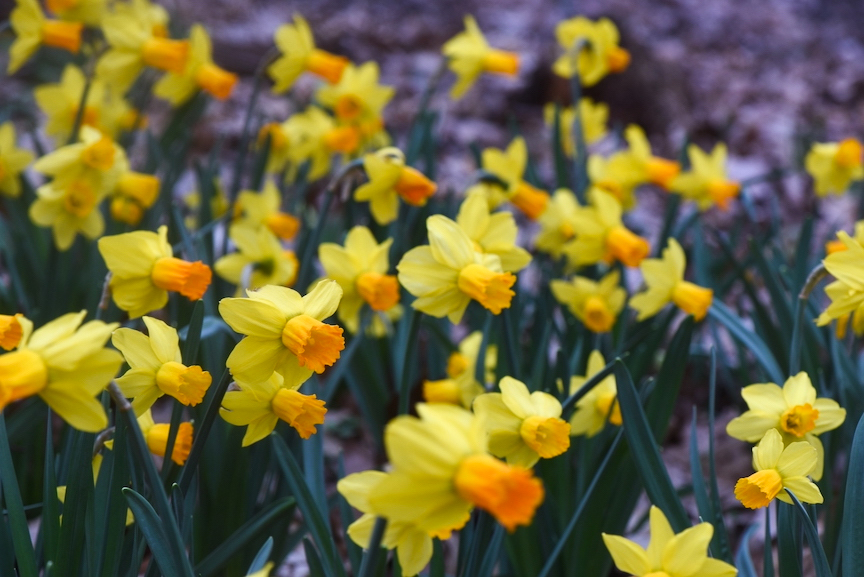

Mr. Daffodil,
As always, thank you for promoting one of the great joys of spring ! You do so with knowledge and passion.
With gratitude, Jay S. (stands for scrounger) Troutman
Thank you Doug! Once upon a time..when I was young..I planted 500 bulbs!! Ended up at the chiropractors office…AND DID NOT PUT THEM IN GROUND CORRECTLY..DOES THE NOSE GO DOWN TO THE DIRT???